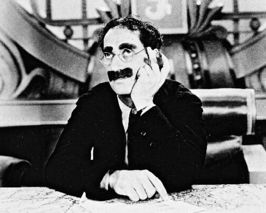Absinthe, the word conjours up artistic dwarves, Can-Can, Degas, Ravachol, the tinny piano stylings of Erik Satie.
And now the Green Goddess ,or Green Fairy, as the drink was known has returned.
Over the past couple of years it has reappeared at clubs and amongst the student crowd. It has been mostly the name combined with overproof alcohol.
The only real Absinthe available for some time in Europe that actually contained wormwood, the active ingrident, came from the Czech Republic
Banned as a psuedo-narcotic, it is actually a sporific against narcotics and an antidote to the poision of the blowfish (used to create le Zombie). The hysteria around Absinthe causing madness and addiction is not unlike the establishments hysteria around drungs period.
Just Say No to Drugs hysteria didn't begin with the Reagan Era but earlier at the turn of last century around Absinthe, and of course then spread to Marijuana, morphine and opiates and cocaine. All mythologised as leading to either madness, or social debauchery, or gasp, the white slave trade, or all of the above. It was a moral crusade, the politics of social control, and had nothing to do with whether any of these drugs actually did the damage the anti-drug propagandists used as their excuse to ban them. Such was also the case with LSD.
Return of the Green Fairy: absinthe is back after chemist clones drink banned in 1915
By the turn of the century - the "Belle Epoque", when Paris was the artistic and literary centre of the world - the smell and taste of absinthe pervaded France but especially the bohemian world of artists and writers in Parisian cafés and dance halls such as Le Rat Mort and Le Chat Noir.
David Nathan-Maister is a British-based trader in antique and new absinthes and absinthe memorabilia, who runs the best absinthe site on the internet - the Virtual Absinthe Museum (www.oxygenee.com). He says that absinthe was the victim of a manipulation. "There never was anything dangerous about absinthe, so long as it was made properly and drunk sensibly," he said.
By the end of the 19th century, the French wine industry had recovered from the phylloxera infestation and wanted its market back.
An unholy alliance formed between the wine lobby, the temperance lobby and conservative politicians who associated absinthe with avant-garde bohemianism. There are now several makers of reasonably authentic absinthe, in France, Spain and Switzerland. However, David Nathan-Maister believes that Ted Breaux's "Jade" absinthes are the only ones to get close to the taste of the pre-1915 original.
To make absinthe, take an ounce of Wormwood, specifically Artemsia Absinthium (there are many forms of Wormwood so you need to use the Absinithium specifically) herb add it too two bottles of Pernod, soak for a week to ten days, strain, take the herbal residue and cook up as a tea, let tea sit for five days, mix the two extracts together, and let sit for a week to ten days. The longer it cures the stronger it gets. This is my personal recipe (c) Here are some others.
Most use sugar and vodka, or a combination of macicated herbs, using Pernod avoids the complication of using other herbs, as the wormwood is actually the missing ingrident from Pernod.
Absinthe is still illegal in the United States, so again most so called absinthe drinks are not, they are falvoured overproof alcohol.
Noxious Weed Information:
Artemisia absinthium L.
This plant is listed by the U.S. federal government or a state. Common names are from state and federal lists. Click on a place name to get a complete noxious weed list for that location.
| Colorado: | ||
| absinth wormwood | | B list (noxious weeds) |
| North Dakota: | ||
| absinth wormwood | | Noxious weed |
| Washington: | ||
| absinth wormwood | | Class C noxious weed |
Find blog posts, photos, events and more off-site about:
wormwood, absinthe, Green-Fairy, Green-Goddess, Pernod, liquor, France, Paris



